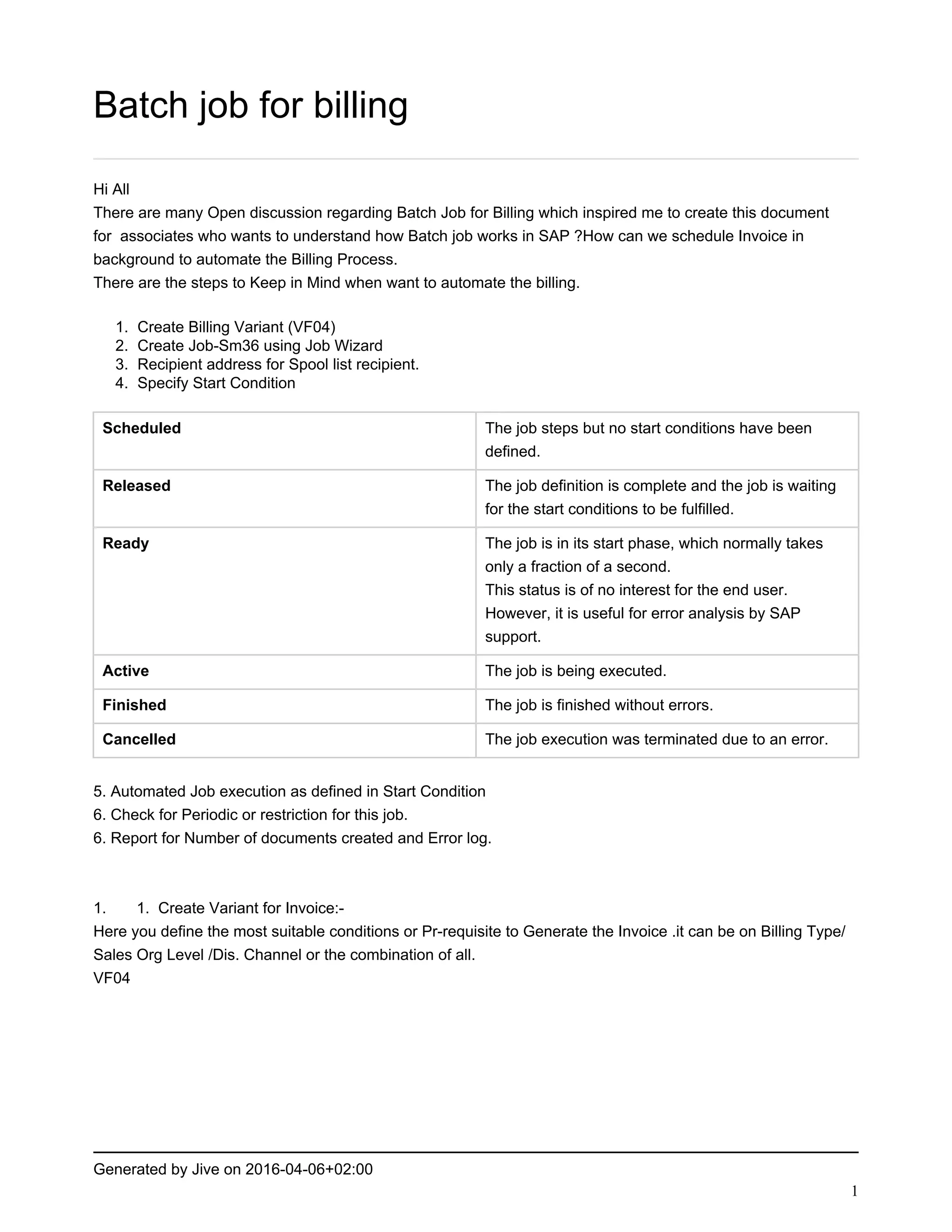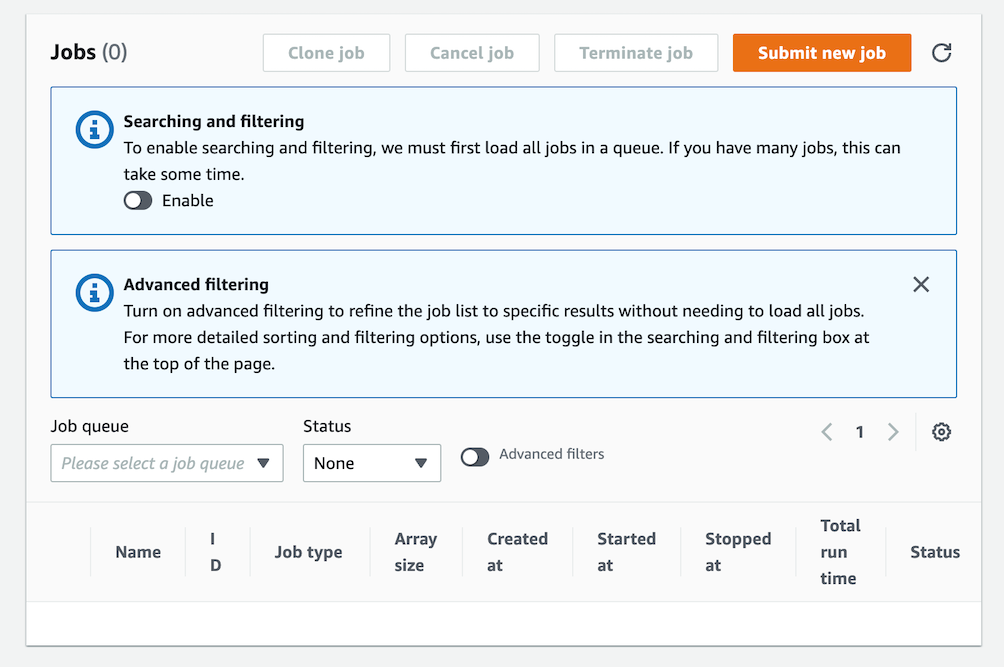RemoteIoT Batch Job Example: Your Ultimate Guide To Streamlining IoT Processes
Have you ever wondered how to simplify and optimize IoT data processing without breaking a sweat? RemoteIoT batch job examples are here to save the day! Imagine a world where your IoT devices seamlessly communicate with each other, processing data in bulk without constant human intervention. Well, that’s exactly what this article is all about. So, buckle up and get ready to dive into the fascinating realm of remote IoT batch jobs!
In today’s fast-paced digital era, IoT (Internet of Things) has become a game-changer for businesses and individuals alike. But handling all that data can be overwhelming, right? That’s where remote IoT batch jobs come in. They’re like the superheroes of data management, quietly working in the background to ensure everything runs smoothly. Whether you’re a tech enthusiast or just starting your IoT journey, understanding these batch jobs is crucial.
Now, you might be thinking, “Why do I need to know about remote IoT batch job examples?” Well, my friend, they’re the backbone of efficient data processing. From automating repetitive tasks to saving precious resources, these examples will show you how to harness the full potential of IoT technology. Let’s get started and unlock the secrets of remote IoT batch jobs!
Read also:Alex Oloughlin The Star Who Stole Hearts With His Talent And Charisma
What Exactly Is a RemoteIoT Batch Job?
A remote IoT batch job is basically a process that handles large amounts of data in a single go, rather than dealing with it one piece at a time. Think of it as a bulk email campaign—instead of sending individual emails to each recipient, you send them all at once. Similarly, remote IoT batch jobs allow you to process data from multiple IoT devices simultaneously, saving time and effort.
These jobs are particularly useful when dealing with massive datasets, such as sensor readings or log files. By executing tasks in batches, you reduce the load on your system and ensure smoother operations. Plus, they’re highly customizable, meaning you can tailor them to fit your specific needs.
Here’s a quick breakdown of why remote IoT batch jobs are so awesome:
- Efficient data processing
- Reduced system overhead
- Customizable workflows
- Improved scalability
Why RemoteIoT Batch Jobs Matter
Let’s face it—IoT devices generate a ton of data, and managing it all can be a nightmare if you don’t have the right tools. Remote IoT batch jobs are like the Swiss Army knife of data management. They help you organize, analyze, and store data efficiently, ensuring you don’t miss out on any valuable insights.
For businesses, this means better decision-making, increased productivity, and cost savings. For individuals, it translates to smoother device performance and a more connected lifestyle. In short, remote IoT batch jobs are the secret ingredient that makes IoT technology truly shine.
Key Benefits of RemoteIoT Batch Jobs
Here are some of the top benefits of incorporating remote IoT batch jobs into your workflow:
Read also:Mastering Iot Ssh Connect Aws A Beginners Guide To Secure Remote Access
- Automation: Automate repetitive tasks to free up your time for more important things.
- Scalability: Easily scale your operations as your data needs grow.
- Reliability: Ensure consistent and accurate data processing every time.
- Cost-Effectiveness: Minimize resource usage and save money in the long run.
How Do RemoteIoT Batch Jobs Work?
Now that we know what remote IoT batch jobs are and why they matter, let’s dive into the nitty-gritty of how they actually work. At their core, these jobs follow a simple process:
- Data Collection: Gather data from various IoT devices and sensors.
- Data Processing: Analyze and transform the collected data into actionable insights.
- Data Storage: Store the processed data securely for future use.
- Feedback Loop: Use the insights gained to improve device performance and user experience.
Each step is crucial in ensuring the smooth execution of batch jobs. By following this process, you can maximize the efficiency of your IoT systems and unlock new possibilities for innovation.
Tools and Technologies Behind RemoteIoT Batch Jobs
Behind every great remote IoT batch job lies a combination of powerful tools and technologies. Some of the most popular ones include:
- Apache Kafka
- Apache Spark
- Amazon Kinesis
- Microsoft Azure IoT Hub
These tools provide the infrastructure needed to handle large-scale data processing tasks, making them essential for anyone looking to implement remote IoT batch jobs.
Real-World RemoteIoT Batch Job Examples
Enough with the theory—let’s take a look at some real-world examples of remote IoT batch jobs in action:
Example 1: Smart Agriculture
In the world of agriculture, IoT devices are used to monitor soil moisture, temperature, and other environmental factors. By implementing remote IoT batch jobs, farmers can process this data in bulk and make informed decisions about irrigation, fertilization, and pest control. This not only improves crop yields but also reduces waste and environmental impact.
Example 2: Industrial Automation
Manufacturing plants rely heavily on IoT sensors to monitor equipment performance and predict maintenance needs. Remote IoT batch jobs help streamline this process by analyzing sensor data and identifying potential issues before they become critical. This results in less downtime and increased productivity.
Example 3: Smart Cities
From traffic management to energy consumption, smart cities rely on IoT technology to improve the quality of life for their residents. Remote IoT batch jobs play a vital role in processing the vast amounts of data generated by these systems, enabling city planners to make data-driven decisions that benefit everyone.
Challenges and Solutions in RemoteIoT Batch Jobs
While remote IoT batch jobs offer numerous benefits, they’re not without their challenges. Some of the most common obstacles include:
- Data security and privacy concerns
- Scalability issues as data volume grows
- Compatibility with existing systems
Fortunately, there are solutions to these challenges. For instance, implementing robust encryption protocols can help safeguard sensitive data. Investing in scalable cloud infrastructure ensures your system can handle increasing data loads. And using standardized APIs can improve compatibility with legacy systems.
Best Practices for RemoteIoT Batch Jobs
To get the most out of your remote IoT batch jobs, consider following these best practices:
- Regularly update your tools and technologies to stay ahead of the curve.
- Monitor performance metrics to identify areas for improvement.
- Collaborate with experts in the field to gain valuable insights and advice.
The Future of RemoteIoT Batch Jobs
As IoT technology continues to evolve, so too will the capabilities of remote IoT batch jobs. We can expect to see advancements in artificial intelligence and machine learning being integrated into these systems, further enhancing their efficiency and effectiveness.
Additionally, the growing demand for sustainable solutions will drive innovation in how remote IoT batch jobs are designed and implemented. This means we’ll likely see more focus on energy-efficient processing and reduced environmental impact.
Emerging Trends in RemoteIoT Batch Jobs
Some of the most exciting trends in remote IoT batch jobs include:
- Edge computing for faster data processing
- Blockchain for enhanced security and transparency
- Quantum computing for tackling complex data challenges
How to Get Started with RemoteIoT Batch Jobs
If you’re ready to dive into the world of remote IoT batch jobs, here’s a step-by-step guide to get you started:
- Identify Your Needs: Determine what kind of data you need to process and how often.
- Choose the Right Tools: Select tools and technologies that align with your requirements.
- Set Up Your System: Configure your devices and software to work together seamlessly.
- Test and Optimize: Run tests to ensure everything is working as expected and make adjustments as needed.
By following these steps, you’ll be well on your way to harnessing the power of remote IoT batch jobs for your own projects.
Resources for Learning More About RemoteIoT Batch Jobs
For those eager to learn more, here are some great resources to explore:
- IoT World Today
- IEEE Internet of Things Journal
- GitHub repositories for IoT projects
Conclusion: Embrace the Power of RemoteIoT Batch Jobs
There you have it—a comprehensive guide to remote IoT batch job examples and their incredible potential. Whether you’re a seasoned pro or just starting out, understanding these processes can revolutionize the way you manage IoT data.
So, what are you waiting for? Dive in, experiment, and discover the endless possibilities that remote IoT batch jobs have to offer. And don’t forget to share your experiences and insights with the community. Together, we can shape the future of IoT technology!
Table of Contents
RemoteIoT Batch Job Example: Your Ultimate Guide to Streamlining IoT Processes
What Exactly Is a RemoteIoT Batch Job?
Why RemoteIoT Batch Jobs Matter
How Do RemoteIoT Batch Jobs Work?
Real-World RemoteIoT Batch Job Examples
Challenges and Solutions in RemoteIoT Batch Jobs
The Future of RemoteIoT Batch Jobs
How to Get Started with RemoteIoT Batch Jobs
Conclusion: Embrace the Power of RemoteIoT Batch Jobs
Table of Contents
Article Recommendations


